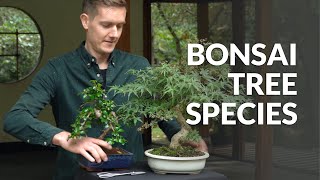Tamarind Bonsai Care guidelines
Place your Tamarind bonsai in a well-lit area where it can receive plenty sunlight, mimicking its native tropical habitat. Position it near a south-facing window to ensure optimal light exposure, but shield it from direct midday sun to prevent leaf scorching. Maintain consistent temperatures between 60°F to 85°F (15°C to 29°C) and protect the bonsai from drafts and temperature extremes.
Ensure consistent moisture levels in the soil by watering your Tamarind bonsai thoroughly when the top inch of soil feels dry to the touch. Avoid overwatering to prevent root rot, and ensure proper drainage to prevent waterlogging. Adjust watering frequency based on environmental factors such as temperature, humidity, and seasonality. Continue reading about watering Bonsai trees.
Watering
Free lecture from the Beginners CourseFeed your Tamarindus with a balanced, water-soluble fertilizer during the growing season (spring through fall) to support healthy growth and foliage development. Apply it every two to four weeks according to the manufacturer's recommendations. Suspend fertilization during dormant winter months.
Regular pruning is essential to maintain the desired shape and structure of your Tamarind bonsai. Use sharp pruning tools to remove dead, diseased, or overcrowded branches. Wiring can be used to train the branches of young Tamarinds, but exercise caution to avoid damaging the delicate branches, and remove wires promptly to prevent them from cutting into the bark. Continue reading about pruning Bonsai trees.
Repot your Tamarind bonsai every two to three years during the early spring months before the onset of new growth. Use a well-draining bonsai soil mix to promote root health and vigor. Prune the roots moderately to encourage new growth. Continue reading about repotting Bonsai trees.
Propagate Tamarind bonsai through seeds or cuttings for new plants. Collect ripe seeds from mature Tamarind fruits and sow them in a well-draining soil mix. Alternatively, take semi-hardwood cuttings from healthy branches and root them in a suitable rooting medium. Provide warmth, humidity, and enough moisture to encourage successful propagation, and transplant rooted cuttings or seedlings once they have established strong root systems.
Keep an eye out for common pests such as aphids, scale insects, and spider mites, which can infest Tamarinds and cause damage to the foliage. Treat infestations promptly with insecticidal soap or horticultural oil. Additionally, watch for signs of fungal diseases such as root rot and leaf spot, and ensure proper airflow to minimize the risk of infection. For more detailed information on these techniques, check out our Bonsai tree care section.

General information about the Tamarind Bonsai tree
With a rich history steeped in culinary traditions, medicinal applications, and symbolic meanings, the Tamarind is a great species used for Bonsai. In the tropics, the tree is evergreen and has bright green foliage which closes overnight, and flowers occasionally. If you need help identifying your tree, take a look at our Bonsai tree identification guide.





